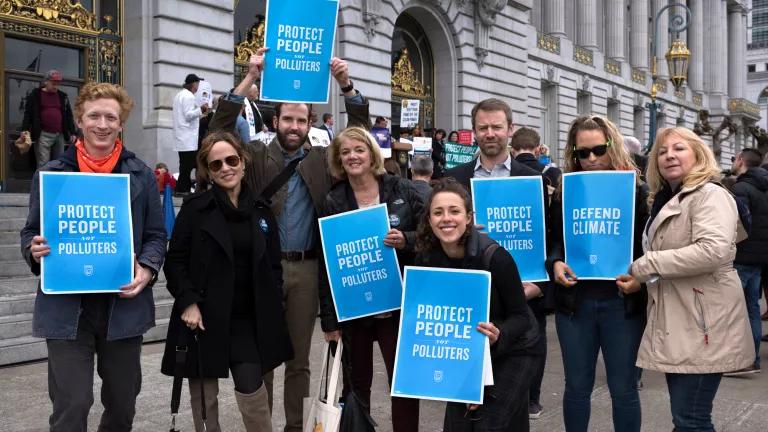
The Asia region is projected to be one of the fastest growing energy markets in the coming decades so the actions this region takes on clean energy and climate change will be critical in helping the world move to a climate safe trajectory. This region has a huge opportunity to spur more renewable energy and energy efficiency. The United States has an important role to play in helping this region shape its energy future in a responsible and environmentally sound manner.
Here is what I told members of the U.S. House Foreign Affairs Committee when I testified at a hearing of the Subcommittee on Asia and the Pacific. See full testimony here.
A new dynamic has emerged in the Asia region as reflected in the historic Paris Agreement on climate change. This agreement includes new climate commitments from all major countries and sets in motion efforts to require deeper emissions reduction commitments from all countries over time.
The countries in the Asia region are already showing that they are prepared to help the Paris Agreement deliver. There is a high likelihood that we will reach the thresholds that allow this agreement to enter into force this year. Fifty-nine countries that account for more than sixty percent of the world’s emissions have publicly announced that they will formally join the agreement this year (see figure). Last week, China formally joined the Paris Agreement alongside the U.S. And, more countries in the region are likely to follow the U.S. and China this year.
As a part of the Paris Agreement, 187 countries responsible for more than 97 percent of the world's climate pollution announced specific plans which outline the emissions reduction targets that they will implement. This includes all key countries in the Asia region.
The Asia region is a major market for clean energy and this opportunity is poised for significant expansion. The Asia region has witnessed a huge uptick in its clean energy deployment the past few years. According to Bloomberg New Energy Finance, clean energy investment in the Asia and Pacific region totaled $161 billion in 2015 – an increase of almost 700 percent since 2005.
The current climate targets, including those contained in the Paris Agreement, mean that Asia’s largest economies are committing themselves to clean energy goals and implementing the necessary domestic actions to meet these goals. Significant renewable energy expansion is expected in China, India, and other countries in the region. As a result, deployment of clean energy in the Asia region is projected to continue to surge in the coming years. According to Bloomberg New Energy Finance:
“The Asia-Pacific region will experience colossal growth in new power generation capacity over the next 25 years, with installed capacity tripling and electricity generation doubling. Renewable energy will make up nearly two-thirds –or $3.6tn –of the 4,890 GW added during this period.”
The United States can help the Asia region embark on a clean energy future by:
- Strengthening our bilateral engagement. The U.S. has active climate and clean energy bilateral agreements with a number of countries in the region including China and India. The U.S. should strengthen bilateral clean energy efforts with these countries. At the same time, the U.S. should further develop bilateral clean energy efforts with others in the region, such as Indonesia and Vietnam since both countries have large untapped renewable energy potential.
- Helping create the policy and finance landscape for even greater action. It is important to ensure that countries create both the right policy and finance dynamics to attract the needed private sector investments. For example, NRDC has found that new innovative finance models—such as Green Banks and Green Bonds—can help key countries unleash even larger amounts of private finance. The U.S. should play a key role in helping countries in the Asian region put in place better policy and finance frameworks for clean energy.
- Mobilizing U.S. investments for clean energy, the U.S. helps to create growing clean energy markets in the Asia region. The U.S. should continue to fund the regular contributions to the GCF. At the same time, the U.S. can help to mobilize additional investments through the Overseas Private Investment Corporation, trade missions, and other venues where the U.S. helps to catalyze private sector investments.
The U.S. can help Asian countries meet their growing energy needs in a low carbon and environmentally responsible manner. This effort can help create new markets for renewable energy and energy efficiency companies and workers, help secure a more stable region, and protect all Americans from the devastating impacts that will occur if we don’t act aggressively on climate change.




